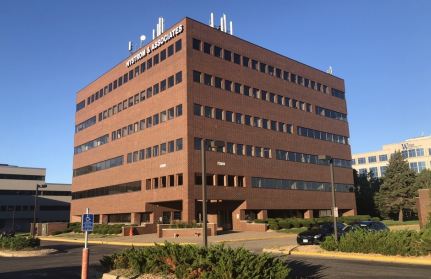技术
- 传感器 - 自动驾驶传感器
适用行业
- 水泥
适用功能
- 销售与市场营销
用例
- 对话机器人
- 时间敏感网络
服务
- 培训
关于客户
该客户端是世界上增长最快的教育应用程序之一,改善了全球家长和教师跟踪学生成功的方式。该应用程序被美国超过一半的学校和其他 150 多个国家/地区使用,提供了一种用户友好的移动方式来实时捕获和分享学生的项目和进度。由于快速增长和客户支持团队规模较小,该客户在管理客户支持方面面临挑战。客户的目标是改善客户支持体验并减少电子邮件票证和等待时间。
挑战
该客户端是一款快速发展的教育应用程序,美国和其他 150 多个国家/地区一半以上的学校都在使用该应用程序,该应用程序在管理客户支持方面面临着挑战。小型客户支持团队正在努力跟上每月不断增加的电子邮件票数,尤其是在返校高峰期。对客服人员手动响应的依赖对用户体验产生了负面影响,客户在首次联系前等待长达 28 小时。此外,在北美工作的美国客户服务团队无法支持不断增长的国际客户群,从而限制了品牌建设和销售驱动对话的潜力。
解决方案
为了改善客户支持体验并减少电子邮件票证和等待时间,客户向自动化客户体验 (ACX) 市场领导者 Ada 寻求帮助。在不到 60 天的时间里,客户现有的支持团队使用 Ada 平台在网站和应用程序上启动了 24/7 聊天机器人,为客户提供即时帮助。 Ada 的 ACX 顾问为客户的支持团队提供了有关如何构建聊天机器人并最大限度地提高其性能的实践培训。在不到两个月的时间里,团队构建了聊天机器人,并自动化了 65% 的现有支持文章,这些文章推动了最高数量的客户咨询。 Ada 还允许该公司扩大对网站即时聊天的支持,并首次为其活跃的教师和家长群体提供应用内帮助。
运营影响
数量效益

Case Study missing?
Start adding your own!
Register with your work email and create a new case study profile for your business.
相关案例.

Case Study
System 800xA at Indian Cement Plants
Chettinad Cement recognized that further efficiencies could be achieved in its cement manufacturing process. It looked to investing in comprehensive operational and control technologies to manage and derive productivity and energy efficiency gains from the assets on Line 2, their second plant in India.

Case Study
Digital Transformation of Atlanta Grout & Tile: An IoT Case Study
Atlanta Grout & Tile, a Tile, Stone & Grout restoration company based in Woodstock, Georgia, was facing challenges with its traditional business model. Despite steady growth over the years, the company was falling behind the web revolution and missing out on the opportunity to tap into a new consumer base. They were using independent software from different vendors for each of their department information and workforce management. This resulted in a lot of manual work on excel and the need to export/import data between different systems. This not only increased overhead costs but also slowed down their response to clients. The company also had to prepare numerous reports manually and lacked access to customer trends for effective business decision-making.

Case Study
Revolutionizing Construction Equipment Rental: A Case Study on ProsRent and ENO8
ProsRent, a startup that won the 'Best Financial Opportunity' and 'Best Pitch' at CodeLaunch 2016, aimed to revolutionize the way construction professionals source and rent heavy equipment. In the construction industry, project managers and contractors typically rent heavy equipment from supply companies. However, predicting inventory can be challenging, and finding the required equipment at the right time and place can be a hassle. If the preferred vendor doesn't have the required equipment, it results in wasted time and money in searching for it, often leading to higher costs due to non-preferred rates and increased delivery costs if the vendor is located far from the job site. Suppliers, on the other hand, desired access to a wider base of trusted renters that they didn't have to vet themselves and wanted to offer dynamic rental pricing based on demand and availability in their market. ProsRent's challenge was to produce a minimum viable product that was fast and first to market but also strong enough to engender loyalty and repeat business from the target market.

Case Study
IoT Solution Enhances Comfort and Energy Efficiency at Apple Valley Commons Office
Apple Valley Commons, a mixed-use office complex built in 1986, was facing significant comfort and energy efficiency challenges. The building, which houses a variety of businesses, was experiencing extreme temperature imbalances, causing discomfort to employees and clients. Despite outdoor temperatures being consistently high during summers, occupants had to use space heaters to keep warm. The electricity bills from the constant operation of the heat pump were exorbitant. The building's elevator room on the roof was also overheating, reaching temperatures of 130 to 140 degrees, causing the elevator equipment to shut down. The building's existing controls solution did not provide a front end for diagnostics or remote control. The building management was seeking a solution that could address these temperature issues, improve occupant comfort, reduce operational costs, and increase building visibility.

Case Study
Revamping EE's Legacy ERP: A Case Study on BT's Strategic Transformation
EE, even after its merger with BT, was operating its ERP estate on legacy infrastructure, hosted on the premises of a third-party supplier. This outdated system resulted in a volume-based operational model, higher time to market, longer delivery cycles, and unsatisfactory customer experience. BT recognized the need for a strategic transformation of these aging ERP systems and sought a partner who could proactively manage application services. The partner was also expected to handle development requirements associated with application management services, drive accountability, and ownership with a time and target-driven transformation of these services. BT's primary goals were to improve customer experience, reduce cycle time, and measure these improvements with precision.




